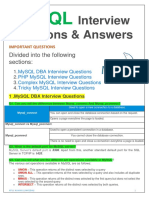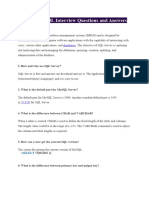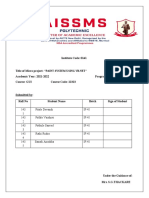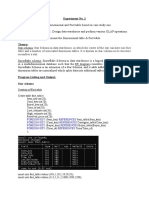0% found this document useful (0 votes)
9 views3 pagesTop MySQL Interview Questions For Software Testers
The document outlines key MySQL interview questions relevant for software testers, covering topics such as SQL usage in testing, types of SQL statements, primary and foreign keys, joins, and differences between various SQL commands. It also discusses backend testing techniques, aggregate functions, normalization, indexing, handling NULL values, and subqueries. This resource serves as a guide for testers to prepare for MySQL-related interview questions.
Uploaded by
durgesh7123Copyright
© © All Rights Reserved
We take content rights seriously. If you suspect this is your content, claim it here.
Available Formats
Download as PDF, TXT or read online on Scribd
0% found this document useful (0 votes)
9 views3 pagesTop MySQL Interview Questions For Software Testers
The document outlines key MySQL interview questions relevant for software testers, covering topics such as SQL usage in testing, types of SQL statements, primary and foreign keys, joins, and differences between various SQL commands. It also discusses backend testing techniques, aggregate functions, normalization, indexing, handling NULL values, and subqueries. This resource serves as a guide for testers to prepare for MySQL-related interview questions.
Uploaded by
durgesh7123Copyright
© © All Rights Reserved
We take content rights seriously. If you suspect this is your content, claim it here.
Available Formats
Download as PDF, TXT or read online on Scribd
/ 3
























































































